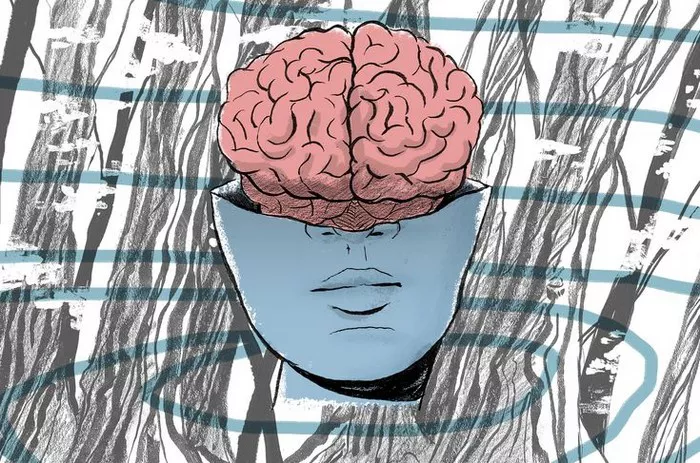Personality disorders are a group of mental health conditions characterized by rigid and unhealthy patterns of thinking, functioning, and behaving. The Diagnostic and Statistical Manual of Mental Disorders, Fifth Edition (DSM-5), categorizes these disorders into three clusters: A, B, and C, each defined by distinct traits. Cluster B personality disorders are characterized by dramatic, overly emotional, or unpredictable thinking or behavior and include Antisocial Personality Disorder, Borderline Personality Disorder, Histrionic Personality Disorder, and Narcissistic Personality Disorder. Among these, Borderline Personality Disorder (BPD) is noted to be the most common cluster B personality disorders, affecting a substantial number of individuals with profound impacts on their lives and relationships. This article aims to provide a detailed overview of Borderline Personality Disorder, its prevalence, diagnostic criteria, associated challenges, and treatment approaches.
Understanding Borderline Personality Disorder
Borderline Personality Disorder is a complex condition marked by intense emotional instability, fears of abandonment, impulsive behavior, and a pattern of unstable relationships. Individuals with BPD experience emotions that can quickly fluctuate, often in response to interpersonal stresses. This emotional roller coaster can lead to various impulsive behaviors and a significant disruption in relationships and daily functioning.
Prevalence and Epidemiology
Research indicates that BPD affects about 1.6% of the adult population, though some estimates suggest numbers could be as high as 5.9%. The disorder is predominantly diagnosed in women, with studies suggesting that about 75% of those diagnosed are female. However, recent research argues this could be due to biases in reporting and diagnosing, with the actual gender prevalence closer to parity. BPD usually begins during adolescence or early adulthood and can become less intense with age.
Diagnostic Criteria for BPD
According to the DSM-5, the diagnosis of Borderline Personality Disorder requires at least five of the following criteria to be met:
Frantic Efforts to Avoid Real or Imagined Abandonment: People with BPD are often terrified of being alone or abandoned, and this fear can lead to intense and inappropriate reactions when separation occurs or is perceived.
A Pattern of Unstable and Intense Interpersonal Relationships: Relationships can be characterized by alternating extremes of idealization and devaluation, also known as “splitting.”
Identity Disturbance: There is often a markedly and persistently unstable self-image or sense of self, which can affect moods, values, and relationships.
Impulsivity in at Least Two Areas that are Potentially Self-damaging: This could include binge eating, reckless driving, spending sprees, substance abuse, or sexual indiscretions.
Recurrent Suicidal Behavior, Gestures, Threats, or Self-harming Behavior: Suicidal threats and actions are common among individuals with BPD, often as a response to the fear of separation or rejection.
Emotional Instability Due to a Marked Reactivity of Mood: This includes intense episodic dysphoria, irritability, or anxiety usually lasting a few hours and only rarely more than a few days.
Chronic Feelings of Emptiness: Individuals often describe feeling empty, as if there is a void inside them.
Inappropriate, Intense Anger or Difficulty Controlling Anger: Displays of temper, constant anger, and recurrent physical fights are common.
Transient, Stress-related Paranoid Ideation or Severe Dissociative Symptoms: Under stress, individuals may experience paranoia or dissociative symptoms.
Etiology and Risk Factors
The causes of Borderline Personality Disorder are not entirely understood, but research suggests a combination of genetic, environmental, and social factors. There is evidence to suggest that BPD is strongly heritable and may be associated with genetics. Environmental factors include a history of childhood trauma such as physical abuse, sexual abuse, or neglect. Neurobiological factors involve changes in the brain, particularly in areas that control impulses and emotional regulation.
Challenges Associated with BPD
Living with BPD can be immensely challenging. The intense emotional swings can hinder a person’s ability to maintain stable relationships and can lead to frequent conflicts with loved ones. Impulsive behaviors can result in self-harm or suicidal behaviors, which are alarmingly high among individuals with BPD. Additionally, people with BPD often have co-occurring mental health disorders, including depression, anxiety disorders, substance abuse, and eating disorders, which complicate both diagnosis and treatment.
Treatment Approaches for BPD
Psychotherapy
Psychotherapy is the cornerstone of treatment for BPD. Several types of therapy have been found effective:
Dialectical Behavior Therapy (DBT): Created specifically for BPD, DBT focuses on teaching skills to manage emotional instability, improve relationships, and reduce self-destructive behaviors.
Cognitive Behavioral Therapy (CBT): CBT can help patients recognize and change core beliefs and behaviors that underlie inaccurate perceptions of themselves and others and problems interacting.
Schema Therapy: This form of therapy combines elements of CBT with other forms of psychotherapy and focuses on identifying and changing deeply held patterns of negative thinking.
Medication
While there are no medications specifically approved to treat BPD, drugs such as antidepressants, mood stabilizers, and antipsychotics may be used to treat co-occurring symptoms and conditions.
Hospitalization
In cases of severe depression, suicidal thoughts, or psychosis, hospitalization may be necessary to ensure safety and stabilize the individual with intensive therapy.
Conclusion
Borderline Personality Disorder is a profoundly disabling condition that affects millions of individuals and their families. Understanding BPD, its impact, and the available treatments is crucial for improving the lives of those affected. With appropriate and ongoing treatment, many people with BPD can achieve stable and rewarding lives. Education and awareness are vital in fostering understanding and reducing the stigma associated with this disorder.
[inline_related_posts title=”You Might Be Interested In” title_align=”left” style=”list” number=”6″ align=”none” ids=”8434,8430,8426″ by=”categories” orderby=”rand” order=”DESC” hide_thumb=”no” thumb_right=”no” views=”no” date=”yes” grid_columns=”2″ post_type=”” tax=””]
































